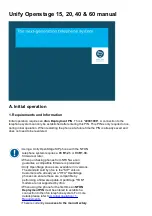
Remote Access Features
Programming Procedures
4–263
The Remote Access feature helps the customer, through proper administration,
to minimize the ability of unauthorized persons to gain access to the network.
Most commonly, phone numbers and codes are compromised when overheard
in a public location, through theft of a wallet or purse containing access
information, or through carelessness (writing codes on a piece of paper and
improperly discarding it). Additionally, hackers may use a computer to dial an
access code and then publish the information to other hackers. Enormous
charges can be run up quickly. It is the customer’s responsibility to take the
appropriate steps to properly implement the features, evaluate and administer
the various restriction levels, protect access codes, and distribute access codes
only to individuals who have been fully advised of the sensitive nature of the
access information.
Common carriers are required by law to collect their tariffed charges. While
these charges are fraudulent charges made by persons with criminal intent,
applicable tariffs state that the customer of record is responsible for payment of
all long-distance or other network charges. AT&T cannot be responsible for such
charges and will not make any allowance or give any credit for charges that
result from unauthorized access.
To minimize the risk of unauthorized access to your communications system
follow these basic rules:
■
Use a nonpublished remote access number.
■
Assign barrier codes randomly to users on a need-to-have basis, keeping
a log of ALL authorized users and assigning one code to one person.
■
Use random sequence barrier codes, which are less likely to be broken.
■
Deactivate all unassigned codes promptly.
■
Ensure that remote access users are aware of their responsibility to keep
the telephone number and any barrier codes secure.
■
When possible, restrict the off-network capability of off-premises callers
using the Call Restrictions and Disallowed List capabilities.
■
When possible, block out-of-hours calling.
■
Frequently monitor system call detail reports for quicker detection of any
unauthorized or abnormal calling patterns.
■
Limit remote call forward to persons on a need-to-have basis.
■
Always use the longest length password allowed on the system.
■
Passwords should consist of a random, non-repetitive, hard-to-guess
sequence of digits.
Summary of Contents for MERLIN LEGEND Release 3.1
Page 372: ...Memory Card 3 236 Common Administrative Procedures...
Page 572: ...Telephones 4 200 Programming Procedures...
Page 715: ...Memory Card Programming Procedures 4 343...
Page 749: ...Feature Quick Reference 5 34 Centralized Telephone Programming...
Page 773: ...Customer Support Information B 2 System Programming...
Page 798: ...Button Diagrams E 6 System Programming...
Page 800: ...Sample Reports F 2 System Programming Continued on next page...
















































